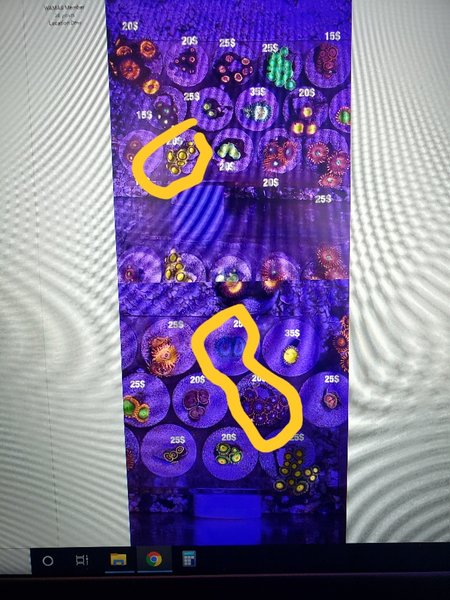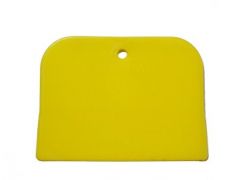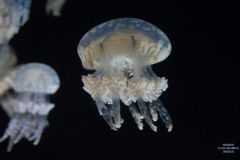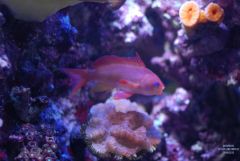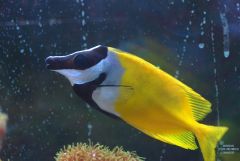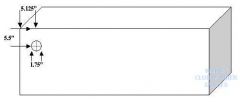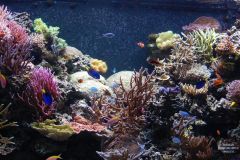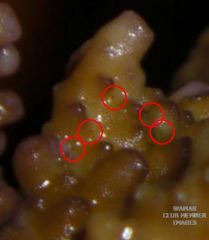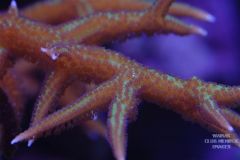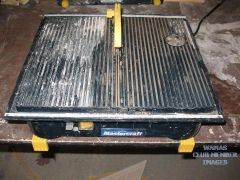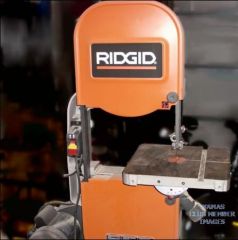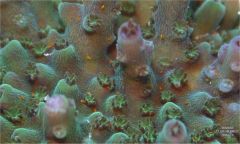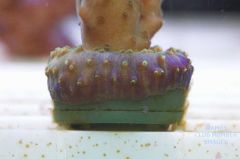
Jon Lazar
WAMAS Family Member-
Posts
3,250 -
Joined
-
Last visited
Content Type
Profiles
Forums
Gallery
Events
Store
Everything posted by Jon Lazar
-
I did something very similar where a connection leaked current into saltwater. I think it was a MJ1200 running in a 5 gallon bucket to mix saltwater, and the cord was frayed where it entered the body of the MJ. This probably ran several hours before I noticed it, and the water was shockingly bright blue. Not just fresh-saltwater blue or slightly-tinted blue. I expect the electricity dissolved the braided copper wires in the power cord. So some copper ion, like copper hydroxide or some such, almost certainly ended up in your container. I would think that a good cleaning will be sufficient, but I would still proceed very cautiously both for freshwater and saltwater. Do you have access to a low-range copper test kit to verify there's no detectable copper? Or a Poly-pad that you could use prophylactically?
-
What exactly is noisy? Waterfall into the overflow box? Running water sound in your secondary drain? Gurgling/flushing sounds from the overflow creating siphon and then breaking it? Splash into the sump? Several little things can change the flow balance of a BA. The drain and return pipes get coated with bacterial slime and sponges, which can either increase or decrease flow. Starts and stops can dislodge little sponges or other critters in the pipes that used to block flow slightly. Debris or sponges can partially block your gate valve opening (which are often mostly closed) then get blown clear by starts and stops. But all of this should be fixable by tweaking the gate valve to rebalance the flow. Can't you adjust the gate valve to make it quiet again?
-
While it's possible to do this, it's certainly not optimal. I don't think the air temperature matters per se, so long as the water temperature stays within reasonable limits. One could use heaters and a chiller to keep things safe for the inhabitants. But if there's an equipment or sensing failure, they're going to have real problems because the water will seek equilibrium with the ambient air temperature. 86 is too hot, and 71 is too cold. A single excursion may not kill the corals, but it will hurt them.
-
Re-thinking the "grow out and trade" practice
Jon Lazar replied to treesprite's topic in General Discussion
There's nothing wrong IMO with rehoming a fish that's grown too large, so long as the aquarist knows what they're doing. I've used a large Lee's specimen container to gently corner many, many fish to move them from one tank to another. Usually between hospital tanks or QTs, but also in smaller reefs. It works great and usually doesn't scare the fish. If you've never caught a fish and don't have a specific plan on how you'd do it, you probably shouldn't buy a fish that's going to outgrow your tank. Also, I think our tanks are less stressful in some ways than many people think. Remember, most fish in the ocean get eaten by other fish and are constantly looking over their "shoulder." Fish in the ocean are constantly trying to defend their territory, and compete for mates. Much of these competition pressures are reduced in our tanks when we only stock one of each species. -
Be careful though because PVC fittings have tapered sockets. If you cut too much of the fitting away, the interior diameter may be too small to fit the pipe into. Try it and you'll see what I mean. I have experience with this... You might be able to get around this by also beveling the edge of the pipe so that you can wedge the pipe into the socket.
-
I agree with jhOU: both ich and an infection. Lots of times you can let an otherwise healthy tank ride out a few ich spots. In this case I would pull that fish out and treat for the infection and the ich.
-
They're prolific and persistent. I've had some success keeping them in check by reaching into the tank and cutting the disks off, or tearing them off with forceps. Then put an aggressive sweeper nearby like euphylia or galaxia. But that just slows them down; it doesn't eradicate them because they leave a little bit of tissue behind and rise like a phoenix, If you can remove the rock, that's by far the best solution.
-
Drain, irrigation, and laundry are three good options. I tried using waste water for fish only tanks but my waste water contained too much ammonia to be safe. Some units have options like a booster pump, a shutoff solenoid, and automatic flush valves. These options require AC power. Some units will have a float valve and a shutoff valve that work together to stop water flow into the unit when your reservoir is full. This is good, but I still have a backup drain near the top of my reservoir that allows excess water to go down a sink. Sort of like the high-level drain in most bathtubs and sinks.
-
If your unit is producing more than 1-2 TDS, then your DI resin is about exhausted. Your RO membrane should reduce your TDS by something like 95%, and the DI resin removes whatever is left. Do you know what your TDS in and out of the actual membrane is? You can remove the DI cannister and run the unit, and measure the output. This will tell you whether your DI is simply exhausted (which I would expect after a year), or whether your RO membrane isn't working right. Changing the DI resin will definitely lower the TDS of your output water; probably all the way to zero. But that doesn't address the underlying problem if your RO membrane is producing high TDS. In fact you could remove the filter, carbon, and RO membrane and run it with only DI resin. But it will exhaust your DI at least 10x faster and that's expensive. You should replace your sediment filter when it gets clogged and reduces flow. You should replace your carbon when it starts letting chlorine past, either because its chemically exhausted or because the carbon is clogged from sediment that the filter didn't catch. These things are hard to measure, so most people change them when the prefilter turns color or after some amount of time. Similar to "12 months or 12,000 miles".
-
Welcome to the hobby and to WAMAS! I would get a Seachem ammonia badge for your tank. It enables real-time monitoring of ammonia.
-
Depends on the corals and how long it lasted. Did this happen over a long time, or all at once?
-
From the album: Misc photos
-
-
From the album: Misc photos
-
From the album: Misc photos
-
From the album: Misc photos
-
This sort of life event is an opportunity for you to do any change/upgrade in your tank and configuration. That should be a major part of your decision on whether to keep your current setup, keep some parts and change others, or do a total reboot. Some things are too hard to change on a tank that's running, like the tank size and viewing aspect, overflow and plumbing configuration, stand height and style, and sump/pump/skimmer. But if you've always wished the tank or equipment was different, now's the time to do it. On the other hand, if you've got a superbly tuned system and you wouldn't change a thing, then keep your equipment and build a catch pan into your stand like ReefdUp mentions.
-
If you mix the two environments, you'll need high intensity reef lighting for the corals. Will that fuel nuisance algae growing on the seagrass itself? Especially in a young tank that has to progress through all those early algae plagues?
-
From the album: Misc photos
-
You can add nitrate to lower your phosphate? Is that because your nitrates are already at zero and in your case, the natural phosphate reduction is nitrate-limited? My phosphate and nitrate are both already non-zero. If I added nitrate (stump remover) I would expect nitrates to go up and phosphate to stay the same.
-
It's hard to tell from the pic, and it's going to take more than a thread here for you to get up to speed on raising clownfish fry. I'm not trying to dissuade you from doing it; it's very rewarding to raise a clutch of eggs past metamorphosis and into teeny fishlets. But there's a lot to it. For now, I recommend you just watch and enjoy. If she's carrying eggs, she'll lay them and the male will fertilize them. They'll start doing this every ~2 weeks or so. Often it takes the fish a few tries to figure things out and get it right. Eventually they'll hatch, and the fry will all be eaten or swept into your filtration and die. If that doesn't happen, they'll starve in your tank because they need a really high food density and will only eat certain things. Joyce Wilkerson's book Clownfish is a great one. There's also tons of online info about raising clownfish, including culturing rotifers and baby brine shrimp.
-
It sounds like what's happening is the pipe can't transport enough water to keep up, until it gets to be a complete siphon. Then it transports too much water, and rapidly drains the overflow box until the bottom of the tee is exposed, breaking the siphon. Then it fills back up again. I always see dursos where the tee is on the drain pipe. Yours has the ell on the drain pipe. I would swap them first and see if it fixes the problem. I don't know that it will, but it should be an easy thing to check unless you've glued the pipes. You might also need to use larger pipe to allow more flow. If your drain pipe extends too deep into your sump, that might also contribute to your problem.


![20200723_184721[1].jpg](https://wamas.org/forums/uploads/monthly_2020_07/small.1972356487_20200723_1847211.jpg.f809f3c89e9081e9b692f9e29c23be31.jpg)
![20200725_130659[1].jpg](https://wamas.org/forums/uploads/monthly_2020_07/small.1866437805_20200725_1306591.jpg.7f0919ef0052bda29f6c261fe639f7db.jpg)
![20200725_130609[1].jpg](https://wamas.org/forums/uploads/monthly_2020_07/small.611013650_20200725_1306091.jpg.b55cafbc7a7676ff350f01a583c56a39.jpg)
![20200725_130539[1].jpg](https://wamas.org/forums/uploads/monthly_2020_07/small.1936628596_20200725_1305391.jpg.47db65e45582eb64495785f368cd9309.jpg)
